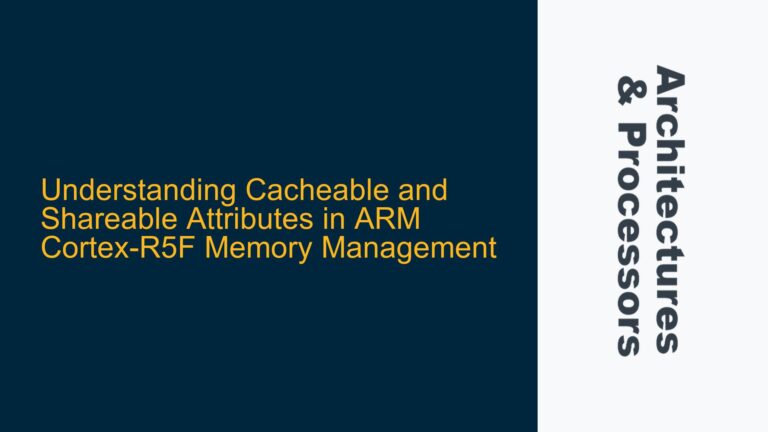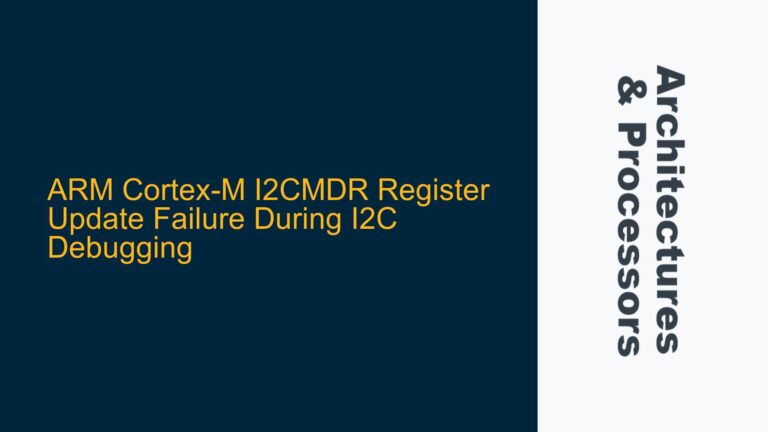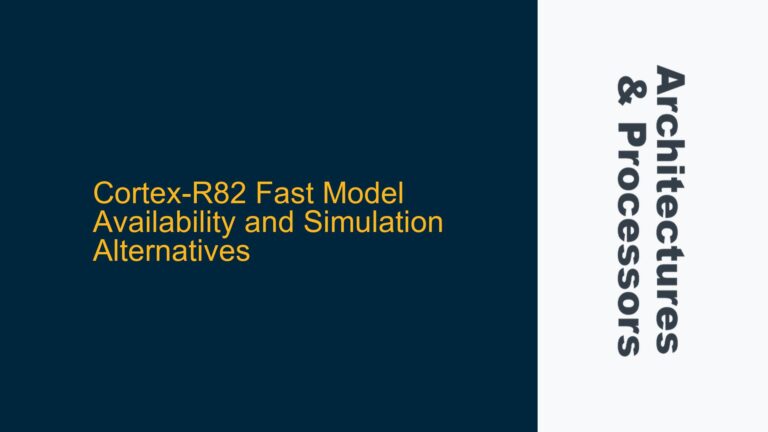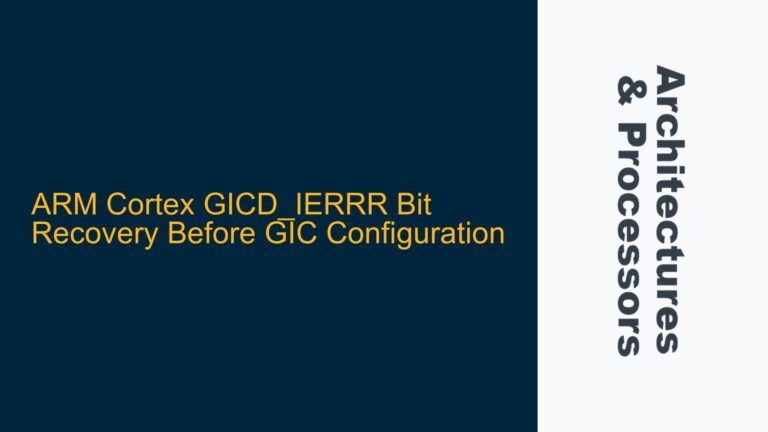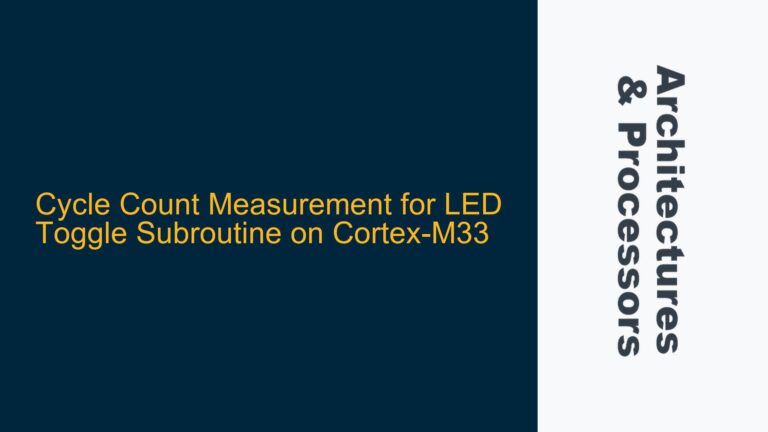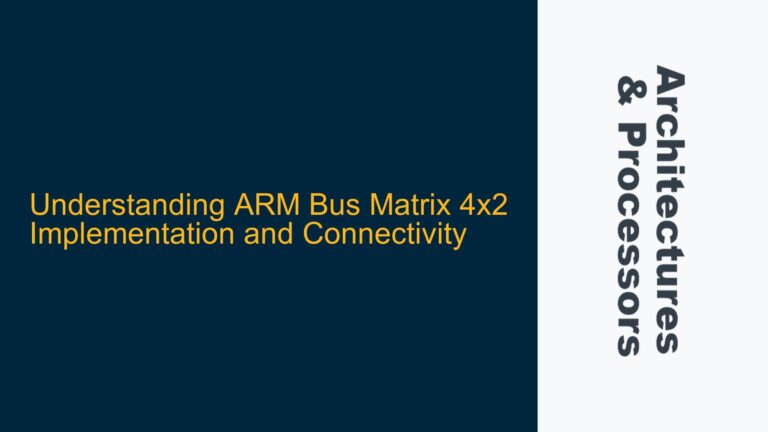Memory Allocation Conflicts and System Restart Behavior in Bare-Metal ARM Cortex-A8 Applications
The core issue revolves around memory allocation conflicts and unexpected system restarts when running a bare-metal application on an ARM Cortex-A8 processor, specifically on the BeagleBone Black platform. The application is intended to run in a bare-metal environment, initialized by U-Boot as a second-stage bootloader. Two primary problems are observed:
- Attempting to load the application at memory address
0x402F0400results in a "trying to overwrite reserved memory" error. - Loading and running the application at memory address
0x80000000causes the system to restart shortly after execution begins.
These issues stem from a combination of memory map misconfigurations, improper handling of the ARM Cortex-A8 memory system, and potential conflicts with U-Boot’s memory usage. The following sections will delve into the root causes and provide detailed troubleshooting steps to resolve these issues.
Memory Map Misconfiguration and Reserved Memory Overlap
The first issue arises when attempting to load the bare-metal application at memory address 0x402F0400. The error message "trying to overwrite reserved memory" indicates that this memory region is already reserved by the system or U-Boot. The ARM Cortex-A8 processor, as implemented in the BeagleBone Black, has a predefined memory map that allocates specific regions for various purposes, such as the first-stage bootloader (MLO), U-Boot, and other system components.
Memory Map Analysis
The memory map for the BeagleBone Black’s AM335x SoC (System on Chip) is critical to understanding this issue. The AM335x Technical Reference Manual (TRM) defines the memory regions and their purposes. Below is a simplified memory map for the AM335x SoC:
| Memory Range | Purpose |
|---|---|
0x402F0000 - 0x402FFFFF |
Reserved for MLO and U-Boot |
0x80000000 - 0x8FFFFFFF |
DDR3 RAM (available for applications) |
0x40300000 - 0x4030FFFF |
Public RAM (used for stack and heap) |
The memory address 0x402F0400 falls within the range reserved for MLO and U-Boot. When U-Boot attempts to load the bare-metal application into this region, it detects an overlap with its own reserved memory, resulting in the error.
Linker Script Misalignment
The linker script provided in the discussion specifies the memory origin as 0x402F0400 for the application. This directly conflicts with the reserved memory region. The linker script should instead align with available memory regions, such as the DDR3 RAM starting at 0x80000000.
Solution: Aligning Memory Allocation with Available Regions
To resolve this issue, the linker script must be updated to use an available memory region. The DDR3 RAM starting at 0x80000000 is a suitable choice. The updated linker script should define the memory origin and length as follows:
MEMORY
{
RAM : ORIGIN = 0x80000000, LENGTH = 0x1B400
}
This ensures that the application is loaded into a region that is not reserved by the system or U-Boot.
System Restart Due to Improper Stack Initialization and Memory Access
The second issue occurs when the application is loaded and executed at memory address 0x80000000. Although the application runs initially, the system restarts shortly afterward. This behavior suggests that the application is encountering a critical error, such as an invalid memory access or stack corruption, causing the processor to reset.
Stack Pointer Initialization
The provided startup code initializes the stack pointer (sp) to 0x8030CDFC when running from 0x80000000. However, this stack pointer value may not align with the available memory region or may conflict with other system components. The stack pointer must be set to a valid and unused memory region within the DDR3 RAM.
Memory Access Violations
The ARM Cortex-A8 processor employs a Memory Protection Unit (MPU) that enforces memory access permissions. If the application attempts to access a restricted or invalid memory region, the MPU triggers a fault, leading to a system restart. The startup code must ensure that all memory accesses are within permitted regions.
Solution: Validating Stack Pointer and Memory Access
To address this issue, the stack pointer should be initialized to a valid memory region within the DDR3 RAM. Additionally, the application should be debugged to identify any invalid memory accesses. Below is an updated version of the startup code with a validated stack pointer:
.globl _start
_start:
mrs r0, cpsr
bic r0, r0, #0x1F ; Clear mode bits
orr r0, r0, #0x13 ; Set SVC mode
orr r0, r0, #0xC0 ; Disable FIQ and IRQ
msr cpsr, r0
mrc p15, 0, r0, c1, c0, 2 ; Read CP access register
orr r0, r0, #0x00F00000 ; Enable full access to NEON/VFP (coproc 10&11)
mcr p15, 0, r0, c1, c0, 2 ; Write CP access register
isb ; Instruction synchronization barrier
mov r0, #0x40000000 ; Switch on VFP & NEON
vmsr fpexc, r0 ; Set EN bit in fpexc
ldr sp, =0x8030CDFC ; Initialize stack pointer to valid DDR3 RAM region
bl psr_main ; Call main function
.loop: b .loop ; Infinite loop to prevent exit
Debugging with a Debugger
To further diagnose the issue, a debugger such as Arm DStream or Lauterbach Trace32 can be used to step through the application’s execution. This allows for the identification of specific instructions or memory accesses that trigger the system restart. The debugger can also be used to inspect the stack and memory regions during execution.
Implementing Robust Bare-Metal Application Initialization
To ensure reliable operation of the bare-metal application, the following best practices should be implemented:
-
Memory Map Validation: Always consult the SoC’s Technical Reference Manual (TRM) to identify reserved and available memory regions. The linker script and startup code must align with these regions.
-
Stack and Heap Management: Initialize the stack pointer to a valid memory region within the available RAM. Ensure that the stack size is sufficient for the application’s requirements.
-
Debugging and Diagnostics: Use a debugger to step through the application’s execution and identify potential issues such as invalid memory accesses or stack corruption.
-
Exception Handling: Implement exception handlers to catch and diagnose faults, such as data aborts or prefetch aborts, that may cause the system to restart.
By following these steps, the bare-metal application can be successfully loaded and executed on the ARM Cortex-A8 processor without encountering memory allocation conflicts or system restarts.

